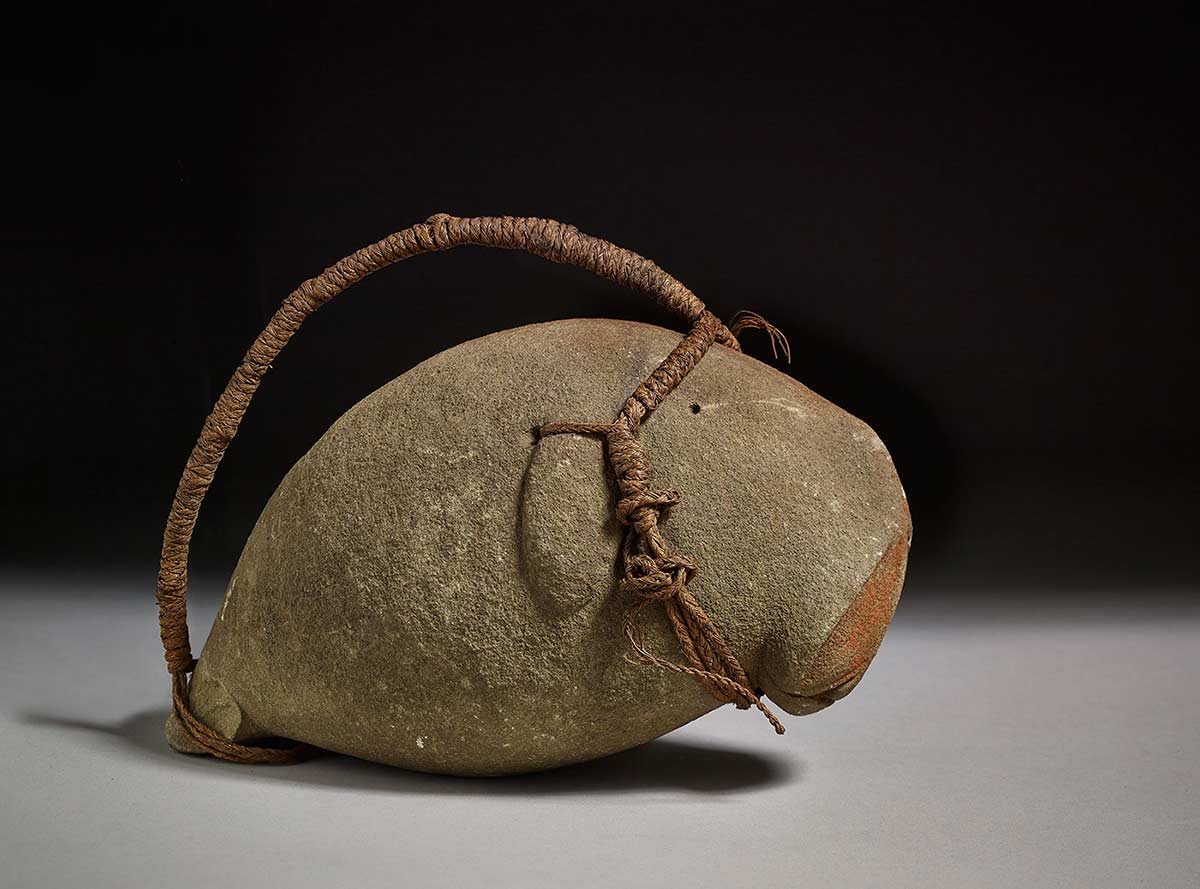To me, the dangal, or dugong charm, is the most beautiful object in Encounters. In the year leading up to the exhibition, I often looked it up on the British Museum’s online catalogue and even printed off one of the photographs and placed it over my desk.
By the time the British Museum curators and our own conservators were carefully installing the objects, I had the layout of the gallery memorised. So when I first entered the exhibition space I deliberately left seeing the dangal to the very end.
When we finally met, I could appreciate fully just how sensitively the sculptor worked the stone. It was a skilled carver who had transformed stone into an animal, creating softness and roundness, detailing features such as teeth, eyes, a little tail. This dangal expresses the carver’s strong connection to his or her environment, and is a profoundly touching object.
I had already researched the background of the dangal, and knew that it was designed as a hunting charm and that the Tudu chief, Maino, had gifted it to British anthropologist Alfred Cort Haddon during one of the latter’s Cambridge expeditions to the Torres Strait in the late 19th century. But it wasn’t until I listened to Ned David, born on Tudu and a descendant of Maino, talk about the dangal that I gained an insight into the significance of this object for the Tudu community today.
I won’t try to summarise Ned’s words but instead encourage you to watch this short video on Maino’s gift.
You may also like

